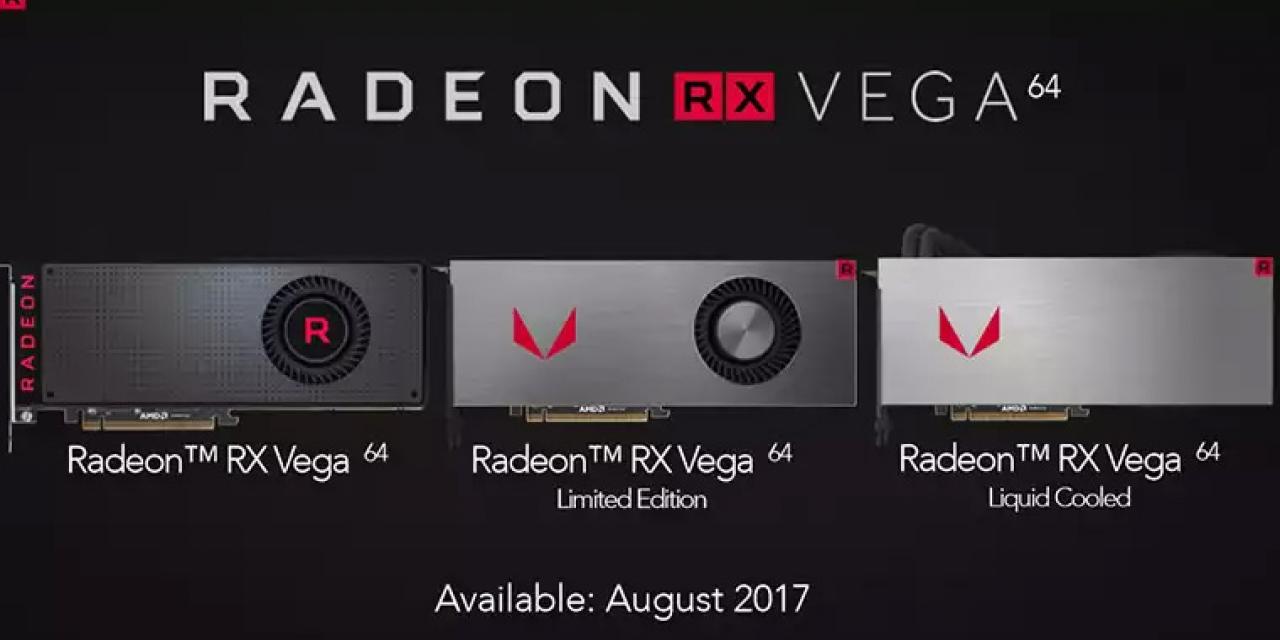
AMD has finally unveiled its RX Vega line up of graphics cards aimed at consumers, splitting into a number of different options with varied performance and with a few different bundles in an attempt to turn gamer PCs into AMD ecosystems, rather than just PCs with an AMD graphics card in.
The three cards announced so far are the RX Vega 64 Liquid Cooled Edition, RX Vega 64 and RX Vega 56. They have slightly different specifications each and will target different sectors of Nvidia's near-top-end line up.
The Vega 56 is designed to go up against the GTX 1070 and will offer 56 compute units, a boosted clock of 1,471MHz and 8GB of HBM2 memory for a total of 10.5 TFLOPS of raw performance. The air cooled Vega 64 is facing off against the GTX 1080 and comes with an expanded 64 Compute Units, a boosted clockspeed of 1,546MHz and 8GB of HBM2 memory for a peak performance of 12.7 TFLOPS.
Offering close to 10 percent extra performance than that model, the liquid cooled version comes with the same specs, though its boosted clock is a higher 1,677MHz and its TDP is much heftier at 345W. Its TFLOP count comes in at 13.7.
None of this is quite as powerful as AMD fans were hoping, but where AMD may pull ahead (as always) is in the pricing. These cards will cost $700, $500 and $400. They're also available in a number of bundles, which appears to be AMD's plan to move people into a position where it makes sense to stay AMD in the future. It's pushing hard for Freesync monitors, with various bundles offering $200 off of Samsung freesync displays, $100 off of Ryzen CPUs and $120 worth of free games (thanks Hexus).
While these cards aren't the raw powerhouses people hoped, they represent a massive jump in AMD technology and will be a solid base to build on, especially with all of their upgraded features and support lists. It may not be the AMD killer, but this generation of cards pulls AMD back into the conversation and should help it compete in a higher price bracket than it's done in quite some time.








